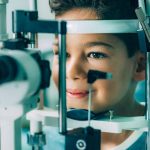
Folks worried about becoming flabby in middle age should check out what their parents looked like when they were that age, a new study says. People are six times more likely to become obese in middle age if both their parents were chubby during that time of their lives, according to research to be presented at the European Congress on Obesity in May. Further, having just one obese parent more than triples a person’s odds of middle-aged obesity, researchers found. These findings demonstrate that the established association between childhood obesity and parental weight doesn’t fade as a kid ages, said lead researcher Mari Mikkelsen, a doctoral research fellow of community medicine at the Arctic University of Norway. “Obesity in childhood, and especially in adolescence, tends to follow the individual into early adulthood, and so we suspected it would also follow them into middle age,” Mikkelsen said in a meeting news release. “We found that this is indeed the case — children whose parents lived with obesity are much more likely to be in living with obesity themselves when they are in their 40s and 50s, long after they have left home,” Mikkelsen added. For this study, researchers analyzed health data on more than 2,000 parent-offspring pairs who took both took part in an ongoing health research project called the Tromso Study. All the offspring were… read on > read on >


















